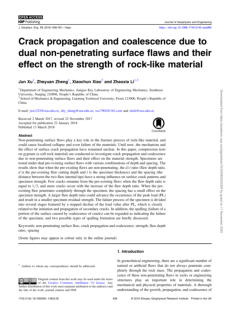Underwater construction 2016 - 2019










This document describes the methods for installing
anchoring & mooring for floating offshore wind farms.
Presented by the author on the 30th of November 2018
at OSIF Meeting, Fugro Nootdorp.

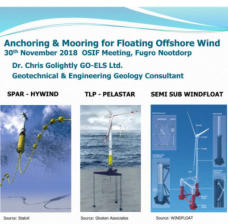

The aim of this guide is to help companies develop a
greater understanding of the components and processes
involved in the
development of offshore wind farms that will be built up
to 2025, and in doing so, help them realise the
opportunities that will arise.

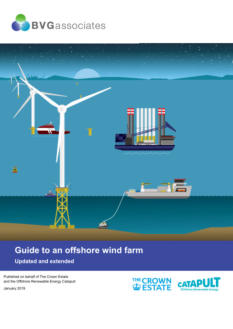


This paper describes the control system for a small
laboratory-based hybrid power system that uses two types
of power generation: Offshore wind and tidal turbines.

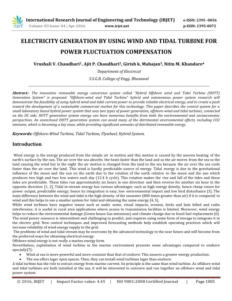


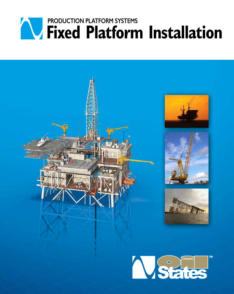


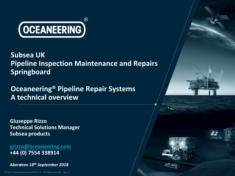


This article reviews tidal barrages and lagoons, tidal
turbines, oscillating hydrofoils, and tidal kites to assess their
suitability for smaller-scale electricity generation in the
shallower waters of coastal areas at the design stage. That
is achieved by discussing each concept's power density,
scalability, durability, maintainability, economic potential,
and environmental impacts. The discussion suggests that
tidal kites and range devices are not well suited toward
small-scale shallow water applications due to depth and
size requirements, respectively. Cross-flow turbines appear
to be the most suitable technology, as they have high
power densities and a maximum size that is not
constrained by water depth.
Oscillating hydrofoils would also be appropriate, provided
comparable levels of efficiency can be achieved.




This report focuses on hydrokinetic power conversion. The
authors used a simplified electrical system to clarify the
hydrokinetic system and its associated controls. River and
tidal generators can be mounted on the bottom of an
estuary, and they are very similar in shape to wind turbine
generators. Other types of tidal or river generators have a
structure identical to that of Savonius or Darrieus wind
turbines, and they may be placed vertically or horizontally,
depending on the resource and the site. Of particular
interest, the Gorlov helical turbine water turbine is a
design that evolved from altering the Darrieus turbine
design to having helical blades/foils. The Gorlov helical
turbine was invented by Professor Alexander M. Gorlov of
Northeastern University.

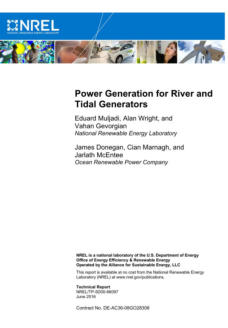


This paper reviews the tides at some locations worldwide
and particularly along the Indian coast. It also discusses
the resource allocation of tidal power plants and the
disadvantages of such installations.
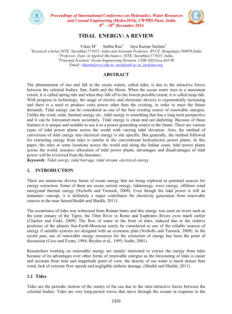


An experimental study using 1:72 scale models based on
a commercial turbine design was carried out to study the
support structure influence on turbulent intensity around
the turbine blades. The study was conducted using the
wave-current tank at the Laboratory of Maritime
Engineering (LABIMA), University of Florence. A realistic
flow environment was established. The turbulent intensity
was measured upstream, and downstream of a turbine
mounted on two different support structures (one
resembling a commercial design, the other with an
additional vertical element) to quantify any variation in
turbulence and performance between the support
structures. Turbine drive power was used to calculate
power generation. Acoustic Doppler velocimetry (ADV)
was used to record and calculate upstream and
downstream turbulent intensity.



This document provides statistics regarding Ocean energy
use in 2018. However, note that France has withdrawn
from its initial tidal energy projects and focuses on wind
energy only.



This document, published in 2018, provides the technical
description of a project led by Orbital Marine Power.
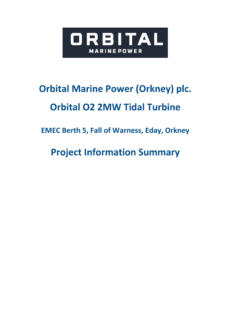

This article summarizes the distribution and current
utilization of tidal power worldwide, particularly in China.
Current tidal power utilization is sketched with a detailed
description of several tidal power stations. And then, the
major types of tidal turbines in use are introduced,
including the tubular bulb unit, rim generator unit, cross
fow unit, etc.



A comprehensive linear mathematical model is
constructed to address the open problem of the radiated
wave for the distensible tube wave energy converter. This
device, full of seawater and located just below the surface
of the sea, undergoes a complex interaction with the
waves running along its length. The result is a bulge wave
in the tube, which, providing certain criteria are met,
grows in amplitude and captures the wave energy
through the power take-off mechanism. Successful
optimization of the device means capturing the energy
from a much larger width of the sea waves (capture
width). To achieve this, the complex interaction between
the incident gravity waves, radiated waves, and bulge
waves are investigated.




This paper investigates the hydroelectromechanical-
coupled dynamics of a piezoelectric wave energy
converter.
The converter comprises a flexible bimorph plate clamped
at its ends and forced to move by incident ocean surface
waves. The piezoceramic layers are connected in series
and transform the elastic motion of the plate into useful
electricity by means of the piezoelectric effect. Using a
distributed-parameter analytical approach, the author
couples the linear piezoelectric constitutive equations for
the plate with the potential-flow equations for the surface
water waves.
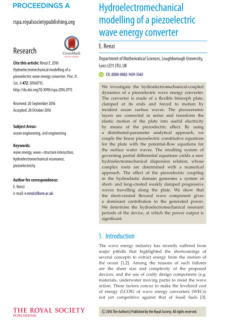


This paper highlights the development of wave energy
converter technology since the late 1960s. It mainly
discusses the characterization of various wave energy
converter technologies, the conceptual and practical
working principles of various devices, and the power take-
off systems for various concepts.



This article provides an account of the research on Wells
turbines. Hence, it draws a roadmap for the
contemporary challenges, which may hinder future
reliance on such systems in the renewable energy sector.
In particular, the article is concerned with the research
directions and methodologies, aiming to enhance the
performance and efficiency of Wells turbines. The report
also provides a thorough discussion of the use of CFD for
performance modeling and design optimization of Wells
turbines.
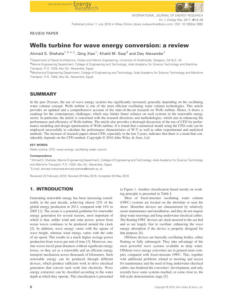


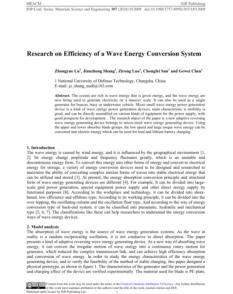


Abstract:
The time-domain simulation follows the heaving of the
conical float in waves and calculates the bag shape,
ballast motion, adiabatic air pressure, and the flow
through the turbine. There are two independent
oscillators, the float with its resonance and the bag/ballast
with its resonance. The coupling of the two oscillators
gives rise to a wide band response with two peaks in the
capture width, each reaching the theoretical A/2π. In this
new wave energy converter, apart from the turbine, there
are no mechanical moving parts, no joints nor pistons, no
end stops nor sliding seals, no maps nor one-way valves.
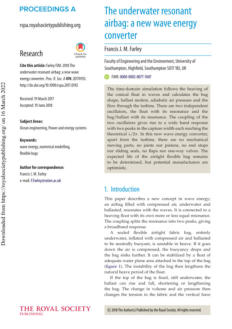

Researchers and engineers operating on coastal structure
design proposed different solutions to reduce wave
reflection and overtop and evaluate wave loads and their
effects on global and local structural stability. Novel
breakwaters have been conceived, consisting of the
integration of Wave Energy Converters (WECs) with
traditional harbour defense structures. These innovative
breakwaters still have their principal function of sheltering
a location from the harmful action of the sea, but with
essential benefits due to the electricity production.
This document discusses research conducted to close the
gaps in the state of knowledge of an Overtopping WECs,
named OBREC (Overtopping BReakwater for Energy
Conversion), integrated into traditional breakwaters.

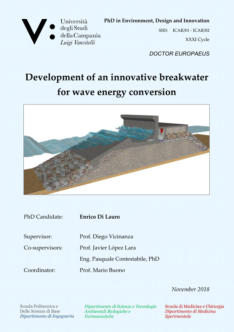

This paper introduces the analysis and design of a wave
energy converter (WEC) that is equipped with a novel
kind of electrostatic power take-off system, known as a
"dielectric elastomer generator"
(DEG). The authors propose a modeling approach that
relies on nonlinear potential-flow hydrodynamics and
electro-hyperelastic theory. Such a model makes it possible
to predict the system response in operational conditions.
Thus it is employed to design and evaluate a DEG-based
WEC that features an effective dynamic response.

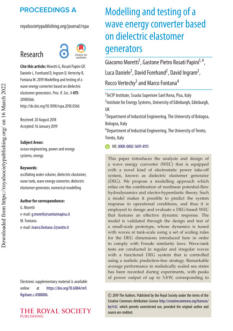

Overtopping breakwater systems are among the most
promising technologies for exploiting wave energy to
generate electricity. They consist of water reservoirs
embedded in piers, placed on top of ramps, higher than
sea level. Pushed by wave energy, seawater fills up the
reservoirs and produces electricity by flowing back down
through low head hydro turbines. Different overtopping
breakwater systems have been tested worldwide in recent
years. This study focuses on the Overtopping BReakwater
for Energy Conversion (OBREC) system that has been
implemented and tested in the harbor of Naples (Italy).

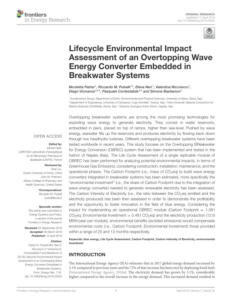

Authors: Alexander Solovyev, Dmitriy Solovyev, and Liubov
Shilova.
This article describes the problems and tasks for increasing
the reliability of equipment design for utilizing the energy
of sea waves. Requirements for protecting structures from
storm impacts by immersing them in undisturbed water
layers using rotary engines articulated with a wave power
station are formulated, and ways to safeguard wave
converters from storm impacts are also proposed.

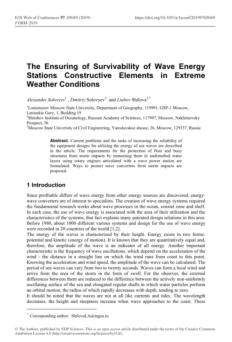

Authors: Ruoyu Xu, Chongfeng Liu, Hengli Liu,
Zhenglong Sun, Tin Lun Lam, & Huihuan Qian.
This paper proposes and analyses a novel Tracking-type
FPV (First Person View) system. Rather than using a motor
as an actuation method, the proposed system utilized the
natural wave energy to adjust the angle of the PV
(photovoltaic) module for solar tracking.
With this design, a floating PV plant can be built with a
reduced total cost and increased energy harvesting
efficiency.

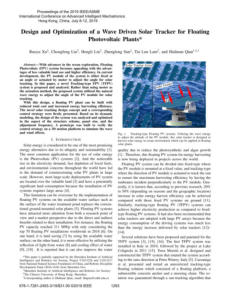


This paper introduces a modified method of characteristics
and its application in forward and inversion simulations of
underwater explosion. Compared with standard method
of characteristics which is appropriate to homoentripic
flow problem, the modified method can be also used to
deal with isentropic flow problem such as underwater
explosion.




Designing a structure based on explosive loads is not
affordable, investigating the waves caused by explosions
and their destructive effects could take into account some
considerations in locating and constructing of these
structures, so that, the minimum destruction would occur.
Given the necessity of this issue and what mentioned
above, the results of evaluating dynamic behavior of
honeycomb sandwich structures under underwater
explosions can be examined using finite element method
and simulating the explosion environment.



Wind blades are major structural elements of wind
turbines but are prone to damage like any other
composite component. Blade damage can cause sudden
structural failure, and the associated costs to repair them
are high. Therefore, it is important to identify the
causation of damage to prevent defects during the
manufacturing, transportation, and operation phases.
This document is not directly linked to diving activities.
However, it can be used as an additional reference for
describing the problems that may arise with wind
turbines.
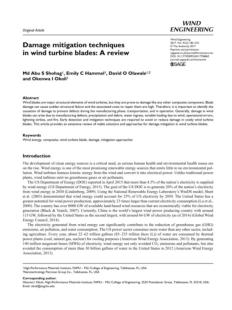


Suction caissons have been used in many offshore
projects, including mooring anchors, breakwaters, sea
walls, and foundations for offshore structures. For the
suction caissons adopted in deep water, the high
hydrostatic pressure will contribute to the suction pressure
to sink the caisson into the seabed. Several technical issues
must be investigated when concrete caissons with
relatively thick walls are used in shallow water. Tests were
conducted to study the performance of a suction caisson
installed in normal consolidated soil.
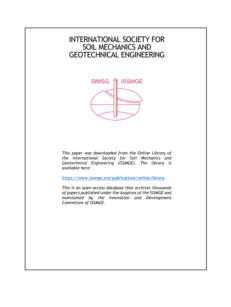


The subject of this master thesis is related to the passive
suction under mud mats. Mud mats are used in the
offshore industry to prevent structures from sinking in the
soil after installation. If, for some reason, a structure has to
be lifted on one side due to an installation error on the
other side due to removal, the force needed to lift the
structure sometimes exceeds the total submerged weight.
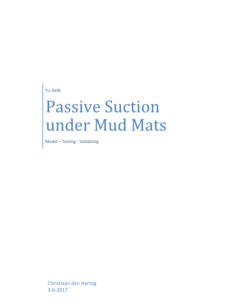


Jack-up platforms were fabricated since the middle of the
20th century and have become the most widely used
offshore drilling unit for oil/gas exploration and
development purposes.
To be more familiar with Jack-up platforms, this paper is
devoted to briefly describing the process of Jack-up
platforms design and fabrication
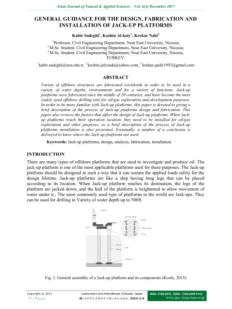

Click on the
octopus to return to
the top of the page


This paper explores the materials suitable for constructing
underwater buildings, the construction methods, and the
specific requirements involved. It also delves into the
feasibility, pros and cons of such structures, their
environmental impact, and the effects on social life and
transportation.
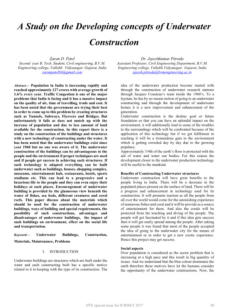


These guidance notes provide recommendations for
designing and installing dynamically installed piles for
offshore applications. They include methods for
geotechnical design and structural evaluation of these
piles. The recommendations are based on finite element
analysis with accurate soil modeling and simulations of
soil-pile interaction. However, alternative methods that
ensure an equivalent level of safety are also welcome.
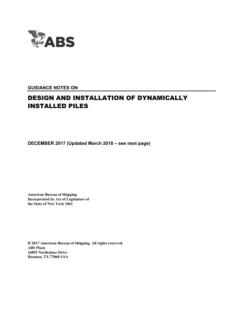

This study applies the Hoek-Brown nonlinear failure
criterion, an empirical rule used to predict the failure of
rocks, considering seepage factors, to deduce the stress
state of rock masses around underwater tunnels using
elastoplastic theory. The authors also introduce the
concept of the "loose zone-bearing zone" to propose a
method for dividing influence zones around underwater
tunnel constructions. This method is further applied to
real-world engineering examples.

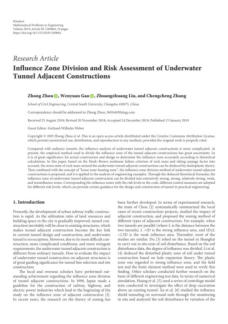


Publisher: International Renewable Energy Agency
This paper explains the limitations of current offshore wind
turbines due to their foundation types and introduces the
potential benefits of using floating foundations for wind
turbines. It highlights how floating foundations can
overcome depth constraints and facilitate power
generation in deeper waters, potentially accessing
stronger winds and larger markets.
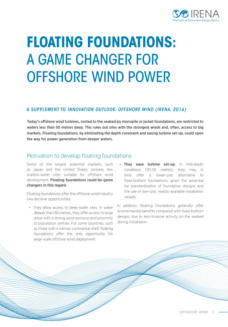


Authors: Jing Liu, Meimanat Soleimanifar, & Ming Lu
This paper discusses a framework for optimizing project
planning and control in modern construction projects,
addressing material delays in the context of offsite
prefabrication and modular construction. It aims to
improve decision-making and project execution through
the use of visual tools such as interactive Gantt charts and
material supply-demand patterns.
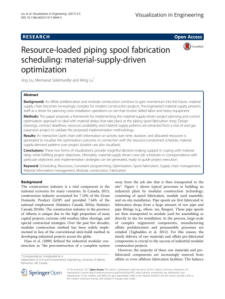


Publisher: EMAS-AMC company
This paper discusses the advancements and
methodologies in offshore pipeline installation, specifically
focusing on conventional methods such as S-Lay, J-Lay,
and Reel Lay to highlight the potential failure modes
associated with these methods and the engineering
considerations needed to address these challenges.
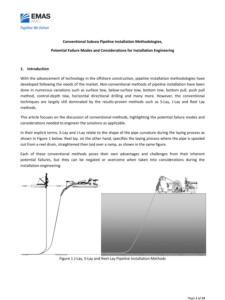


Publisher: NAC executive insights
This article outlines the initial construction engineering
tasks and considerations for designing and building
structures in a marine environment. That includes the
design of systems for moving heavy loads, maintaining
buoyancy and stability, and methods for stabilizing and
fixing floating structures, all while ensuring efficiency,
economy, and safety.
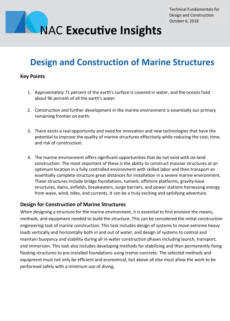


Publisher: University of Plymouth
This study reviews the current state of knowledge
regarding the geotechnical and structural issues related to
the foundations of offshore wind turbines. It aims to
highlight the importance of understanding these
technical challenges for the rapid development of
offshore wind energy and to provide recommendations
for future research and development in this area.
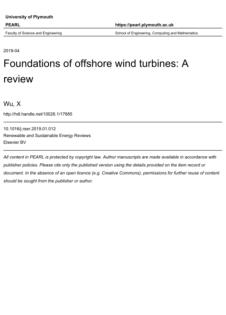

Authors: Jijian Lian, Qi Jiang, Xiaofeng Dong, Yue Zhao,
and Hao Zhao
This paper presents a research study focusing on the
dynamic impedances of wide-shallow bucket foundations
(WSBF) under horizontal and swinging loads, specifically
in the context of offshore wind turbines (OWT). The study
aims to fill a gap in previous research by investigating the
dynamic performance of WSBF using a numerical model
based on the coupled finite-infinite element (FE-IFE)
technique. The paper also discusses the effect of various
parameters on the dynamic responses of WSBF and
provides a safety threshold curve for the design of OWT
supported by large-scale WSBF.

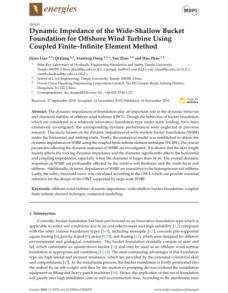


Author: Jhonnie M. Kern
This document describes the Nairobi International
Convention on the Removal of Wrecks, which aims to
deal with shipwrecks, including the responsibilities of the
registered ship owner, the measures to be taken for wreck
removal, and the enforcement mechanisms. The author
also critiques the convention, noting potential issues with
harmonization and clarity while ultimately concluding that
it represents progress in the regulation of wreck removal.
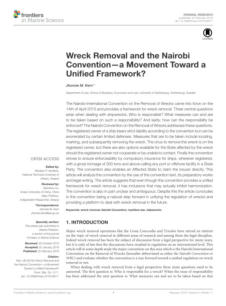


Authors: Nick Cresswell, Jason Hayman, Andy Kyte, Andy
Hunt, Penny Jeffcoate
This paper discusses the application and benefits of using
drilled anchors for supporting taut-moored tidal platforms,
particularly in high-yield tidal energy sites, highlighting the
advantages of this technology, such as reduced weight
and cost, and describes the necessary geotechnical
considerations, installation methodologies, and testing
involved in deploying these anchors. It also seeks to
inform about the specific anchoring solutions developed
by Sustainable Marine Energy (SME) for their PLAT-O
buoyant platform.
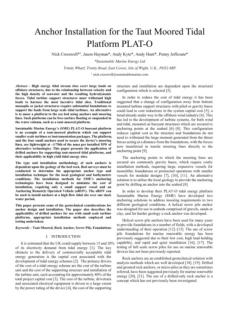


This document provides an informative overview of
saturation diving, explaining its purpose, requirements,
and applications. It aims to demonstrate the technical and
physiological aspects of saturation diving, its benefits for
commercial and military operations, and its challenges
and limitations.



Publisher: Rohit Bhandari
This study focuses on the use of gabion mattresses as a
method for riverbank protection to highlight the
effectiveness and application of gabion structures in
preventing soil erosion and maintaining slope stability. It
provides an overview of the qualities of gabion mattresses,
factors to consider in their design and implementation,
and describes construction techniques. Additionally, it
shares insights from a case study conducted on the Kayar
Khola River in Nepal, demonstrating the practical benefits
of using gabion mattresses for local communities.
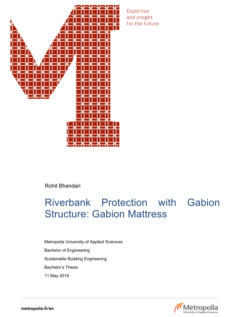


Author: Lingying Ni, Chuan Sun, Qiang Zhen
This paper presents a technical analysis and findings
related to the stability and performance of submarine
pipelines, mainly focusing on flexible pipes. It discusses the
use of finite element software (ABAQUS) to simulate and
analyze various factors affecting pipeline stability, such as
soil stress balance, pipe weight, internal pressure, and
horizontal buckling, and the results of simulations,
highlighting the impact of temperature and pressure
differences on pipeline failure and the influence of seabed
soil parameters, especially the friction coefficient, on
pipeline stability.
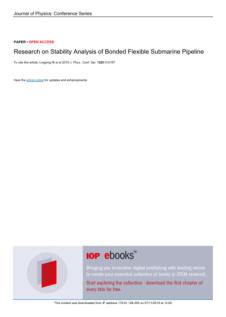

Authors: Zhenxin Chen, Yanjie Le, Heng Liu, Fan Yang,
Wenkan Hu, Kai Hu, Jinxian Li, and Tingting He
This paper presents a research study on how different
laying conditions affect the maximum allowable ampacity
of submarine cables. The study uses a 110kV YJQ-1×500
XLPE submarine cable as the research object and employs
the finite element method to establish electromagnetic-
thermal coupling models in Comsol Multiphysics to
convey the findings that laying conditions impact heat
dissipation and ampacity, with cables in seawater having
the highest ampacity and those in pipelines having the
lowest. It also notes that seawater temperature variations
can influence cable ampacity.

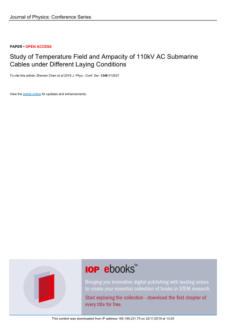

publisher: Government of India
This document aims to increase fish production
sustainably through sea cage farming to meet seafood
demand. It focuses on technical specifications for site
selection, cage design, species choice, hatcheries, feed
management, and harvesting. It also suggests measures
to reduce environmental impact, outlines necessary
research for sustainable growth, and presents guidelines
from the Blue Revolution Scheme of the Government of
India, addressing licensing and ownership issues.


23 - Guidelines for Sea Cage Farming in India
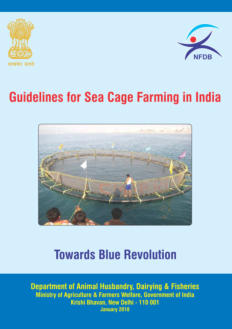



49 - Numerical Analysis of Hydrodynamics Around Submarine
Pipeline End Manifold (PLEM) Under Tsunami-Like Wave.
Authors: Enjin zhao, Yuezhao tang, Jie shao, and Lin mu
Submarine Pipeline End Manifold (PLEM) is the end of
submarine pipelines, supporting equipment on the
seafloor. It is vulnerable to extreme waves like tsunamis.
This study develops a two-phase flow model to simulate
tsunami-like waves impacting PLEM. The model is verified
and analyzes hydrodynamic forces on PLEM caused by
different waves, using the Fast Fourier Transform method.
Various environmental and structural factors, such as
wave height and pipe distance, are considered, revealing
significant differences in vortex field evolutions and
hydrodynamic forces on PLEM under different waves..




37 - Failure Analysis of Topside Facilities on Oil/Gas Platforms in the
Bohai Sea
Authors: Songsong Yu, Dayong Zhang, and Qianjin Yue
The jacket platform in the Bohai Sea oilfield faces safety
risks due to ice-induced vibrations. Two incidents resulted
in a well's blow down pipeline rupture and high-pressure
natural gas ejection. Mechanical analysis identified the
deck's inertial force as the main cause, leading to the
installation of three fixed cones.
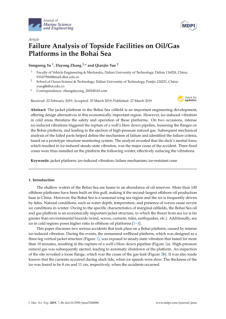



38 - Advantages of the Application of the Temper Bead Welding
Technique During Wet Welding
Authors: Jacek Tomków, Grzegorz Rogalski, Dariusz
Fydrych, and Jerzy Łabanowski
This study examined the weldability of thermo-
mechanically rolled S460ML steel in underwater wet
welding conditions. Results showed high susceptibility to
cold cracking and microcracks in the heat-affected zone
(HAZ). Tempered bead welding (TBW) was chosen to
improve weldability, reducing maximum hardness below
the critical value of 380 HV10. The study found that a
75%-100% pitch between two beads decreases hardness,
grain size, and cracks.
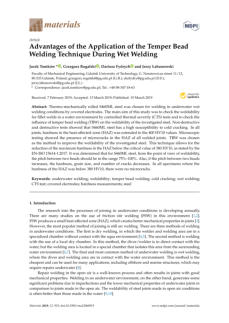


Authors: Jun Xu, Zheyuan Zheng, Xiaochun Xiao, and
Zhaoxia Li
This article explores the role of non-penetrating surface
flaws in the fracture process of rock-like materials,
specifically focusing on gypsum. Through compression
tests, the study examines how these flaws affect crack
propagation, coalescence, and ultimately the strength of
the material. The findings reveal significant influences of
flaw depth and spacing on crack patterns and material
performance, providing insights into the mechanisms
behind localized collapse and material failure.
